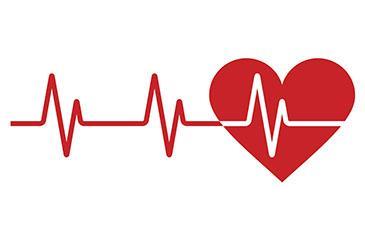Studies show that multiple blood pressures measured by patients in their homes over time can better predict cardiovascular morbidity and mortality rather than single, routine blood pressure measures that occur during an office visit. Whether your practice would like to implement self-measured blood pressure monitoring (SMBP) or improve on how SMBP is being used with your patients, here are three resources that can help:
“M.A.P.”
“M.A.P.” (Measure accurately, Act rapidly, Partner with patients) collection of tools, developed as part of the AMA’s commitment to Improving Health Outcomes, provide practical resources to help clinical teams collaborate successfully to improve patients’ blood pressure control. These tools include:
- Evidence-based checklists
- Posters that illustrate proper positioning
- Tools to help you assess how well you’re clinical team is implementing the proper techniques required for accurate blood pressure measurement
- An infographic to remind patients and the care team of the common errors to avoid when measuring blood pressure
Creating an effective SMBP monitoring program
The clinical guide (log in) to creating an effective SMBP monitoring program, developed by the AMA and Johns Hopkins Medicine, provides everything you need to start using SMBP in your practice. This includes teaching patients how to self-measure blood pressure accurately and the appropriate set-up procedures to document and manage the process.
The guide also offers suggestions for more successful implementation using SMBP, such as the following factors to help you select which patients will benefit the most from using SMBP:
- Patients with elevated readings that persist for two or more subsequent office visits
- Patients who already have a diagnosis of hypertension, are being ruled out for hypertension or have white coat hypertension
- Patients who have the ability to take accurate blood pressure measurements and are willing to do so consistently
- Patients who are willing and able to document the readings every time if the device doesn’t have memory storage capability
Measuring accurately
Fast facts on measuring accurately, created by the AMA and Johns Hopkins Medicine, offer answers to common questions frequently asked by patients and physicians. These include:
- Where should I recommend my patients get a home blood pressure monitor? Most monitors are purchased in pharmacies. Unfortunately, many public and private health insurance plans don’t cover the cost of self-monitoring devices. Prices for a typical high-quality device can range from $50 to $100. Another option for physicians is to purchase SMBP monitors for your practice and loan them out to patients.
- Which monitor should I recommend? Automated upper arm monitors are the most commonly recommended self-measured blood pressure monitors because they are more accurate and reliable than wrist or finger devices. With this type, the patient wraps a cuff around the upper arm and presses a button to get a digital blood pressure reading. When recommending an automated device, tell your patients to make sure the device is validated as being accurate and has memory to store readings whenever possible. If the monitor can calculate an average of two or three readings taken at short intervals, this is a very desirable feature that saves both you and the patient time, and provides more reliable readings.
-
What is the best way for patients to use their blood pressure monitor at home? Before starting to use SMBP with a patient, it is critical to perform a one-time training session when you or someone on your care team can watch the patient conduct a blood pressure measurement and make sure their blood pressure monitor is accurate when used on their arm. Share this infographic with your patients to reinforce the appropriate position recommended to get the most accurate readings. When measuring at home, patients should always rest for five minutes, then take two readings at one to two-minute intervals, both morning and evening for seven consecutive days. That’s a total of four measurements a day and 28 per week. After the first week, patients should report all of the numbers back to the office. When you receive the blood pressures from your patients, calculate the average value of all the systolic and diastolic blood pressures. Use this single average systolic and average diastolic blood pressure to determine whether your patient has hypertension or your patient’s blood pressure is controlled. Blood pressures at home ≥ 135/85 mm Hg are the cut point for hypertension in most patients using SMBP. Always make a plan with every patient so they know what to do if their blood pressure is out of the expected range or if they have symptoms associated with high or low blood pressure.
Other ways to improve blood pressure monitoring
Make sure your care team is getting the most accurate readings and taking the most effective action to help your patients with hypertension get their blood pressure under control. Check out additional insights to help improve blood pressure management among your patients:
- Read the three questions you should ask patients when measuring their blood pressure.
- Discover what other physicians are doing to control hypertension in their practices.
- Find out what the headlines aren’t telling you about the SPRINT trial.




